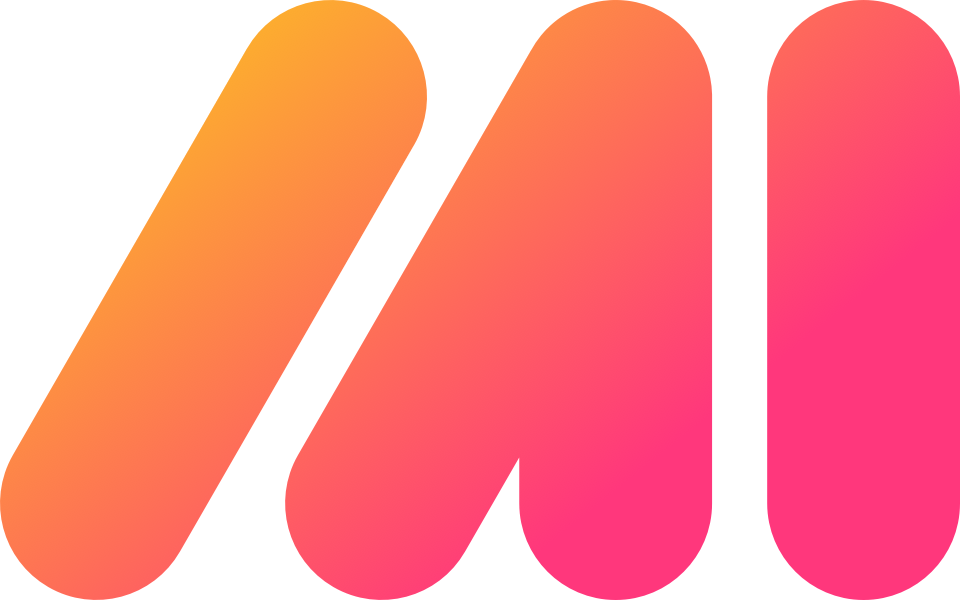Comparing features and benefits of Markup Hero and our competitors.
There are a ton of tools out there for taking screenshots, marking up images and making annotations to files. Some of these tools have been around for over a decade and have millions of users. But just because you've been using one tool for a while, doesn't mean something new won't come along that will serve you much better. This is why we are building Markup Hero in the first place. There is always room for innovation and this category of software has been stagnant for a long time. This article is here to demonstrate the shortcomings we saw in many of the popular screenshot and image annotation tools. And to show you how Markup Hero aims to give you so much more than you are getting from your current solution.
All we ask is that you give Markup Hero a try and tell us what's missing or why we're not yet living up to all your needs. We're adding features and updating the tech every single day. We will respond to your feedback and questions the VERY SAME DAY you ask.
Please try Markup Hero and let us know what you think.
Markup Hero vs. Built-In Mac OS Screenshot & Markup Tool
Many Mac users are already familiar with the built-in screenshot and markup tool. While it's nice that the tool already ships with the OS, it's quite limited in key areas. The biggest weakness is the ability to see some type of history of screenshots and markups. You can save a markup sure, but you can't edit it after you close the markup tool and you have no list to access them from. Other limitations are on the markup tools themselves. While they have a range of objects (arrows, boxes, type, etc.), the experience is slow and tedious. When it comes to screenshots and markup, speed is paramount. That applies to the actual canvas tools as much as the screenshot itself. Additionally, sharing is weak with this tool. You can't generate a link, you can only copy and paste the final image into other programs.
💡 Where Markup Hero Shines: Built in history of markups as well as markups shared with you. Easy copy of final markup image to clipboard or download and shareable links. Most of all is the ability to edit your past markups. And canvas tools are fast and simple to use.
Markup Hero vs. Built-In Windows Screenshot & Markup Tool
Windows users can use the built-in screenshot and markup tool, but it's pretty weak, even more so than the Mac version. You can basically take a screenshot, add some basic markup, and save the file to your computer. You cannot edit past markups, generate shareable links, view any kind of history, or even copy the markup to clipboard to share in Slack, SMS, Email or other programs. The tool can be buggy too as we've found in our testing markup objects don't stick when downloading the file.
💡 Where Markup Hero Wins: Super fast performance from screenshot to final markup. The ability to see your history of markups and edit them, plus shareable links and collaboration features. Plus, markup canvas tools are faster, more flexible and easier to use.
Markup Hero vs. Skitch from Evernote
Skitch has been around for a while and when it was a stand-alone product, it was widely touted as the best of the best. Since being acquired by Evernote however, the tool has faltered in terms of features, usability and collaboration. The biggest issue is that you can't use Skitch without an Evernote subscription. And if you've read this article comparing Skitch to Notion, you'll see why it's a mistake to go with Evernote these days for notes and such. Collaboration is completely missing from Skitch other than sharing a basic link that actually makes an Evernote file, which is confusing and not useful for share recipients.
💡 Where Markup Hero is Better: It's cheaper than Skitch, but more importantly, you don't have to use Evernote or anything else to get the full power of Markup Hero. Next, Markup Hero is web based, so you can access your markup history, shared markups and edit your past work from any computer connected to the internet. Moreover, canvas tools in Markup Hero are slicker and easier to use. The toggle highlight or normal text outshines the limited formatting of Skitch. Finally the share link option gives recipients the ability to see their history without even creating an account.
Markup Hero vs. Droplr
Droplr was an up-and-comer for a number of years, giving Skitch a run before both companies sold and their respective product teams were seemingly let go. Droplr has the advantage of being web based like Markup Hero, but the limitations and shortcomings are plentiful. First, there is no free version of Droplr. You get a 15 day trial, then thats it. All your screenshots and markups are gone after that unless you upgrade. But the biggest annoyance with Droplr is the user flow. There are a bunch of unnecessary steps to begin doing markup as well as sharing links. You have to take a screenshot, save the image, choose to markup, choose to share — each step takes time for the system to respond, killing crucial productivity. Moreover, while the tool provides a history of markups, there is no way to edit anything after you've saved it. Once saved, the image is flattened and you have to start from the beginning to fix any markup mistakes.
💡 Where Markup Hero Dominates: No doubt, Markup Hero's ability to edit past markups is where the platform makes Droplr obsolete. On top of that, the velocity from screenshot to markup to share is lightyears faster. History of markups and those shared with you is much easier to access and users aren't logged out after a few hours like Droplr does. And of course the free version of Markup Hero is a welcome value for many customers this will be more than enough. But even still the paid version is cheaper altogether. But best of all, Markup Hero is supported and being updated weekly by our team, whereas Droplr is becoming fast stale with no innovation.
Markup Hero vs. Monosnap
Monosnap has been a go-to solution for many developers and product people for years. But like Droplr and Skitch, the tool hasn't been updated for years. The speed is pretty good from screenshot to markup but the rest of the limitations make it a clear no for anyone who does screenshots and markup even 1-2 times per week. For one, you can't edit anything. Once you make a screenshot, the previous one is gone. So you better have saved it — although even if you did, you can't edit it either so it's kinda useless. So of course, no history of markups and certainly no sharing view logs. The biggest annoyance is the type tool, it's been buggy for years. You can't highlight text at all, so changing a typo is a serious pain. A deal breaker if you think about it. You can create a shareable link, but you need to either pay for the service or use Dropbox or other cloud storage to connect and store the files. Clearly no thought about collaboration and limited innovation in years makes Monosnap a monolith.
💡 Where Markup Hero Overtakes: Having a history you can access anywhere, showing a log of viewed markups that have been shared with you, and of course being able to edit and duplicate markups make Markup Hero a no brainer over Monosnap. On top of the regular updates from the Markup Hero team and the upcoming collaboration features like multiple markups per page and real-time editing and commenting, Markup Hero is the goto over Monosnap.
Markup Hero vs. Snagit
Snagit is a beast of a software — it seemingly aspires to be Photoshop. This is not what you want when it comes to screenshots and markups. There are a few cool features in there, but their user interface is flooded with buttons, levers and dials and for most users it's just overwhelming. This is not uncommon for traditional software that's been around for over a decade. It's good that they are still updating it, but for the bulk of users, even power users, it's just too much. You can see your history, but it's not easy to navigate, especially if you have a lot of markups. Although you can't see markups that have been shared with you, which comes in really quite handy. And you can create a shareable link, but it takes forever to generate. It's really become an image manipulation tool, akin to the old Mac Paint or Windows Printshop in many ways. If you want a bloated, hard to use, low velocity tool for screenshots and markup.
💡 Where Markup Hero Kills It: Simplicity, speed and flexibility is where Markup Hero got its roots and will always be core to the platform. On the speed front, creating shareable links near light-speed relative to Snagit and the history of shared markups is very useful — and doesn't even require account creation. Collaboration is lost on Snagit and while limited at present with Markup Hero, it's on the roadmap and soon. The solution really focuses on the core needs of most users — screenshot, markup, share, collaborate. For users that need to do more to their images, there's Photoshop for all that.
Markup Hero vs. Jing
Jing is the ugly stepchild of Snagit, from the same company. It's not clear exactly what the plan was having 2 solutions, but either way Jing is being sun-setted in short order. Some Jing users like the floating toolbar, something Markup Hero may have in the future if enough people ask for it, but the rest of the solution is quite limited. At present, Jing won't work on Mac unless you're running an OS Mountain Lion or earlier. But if you can get it running, you're going to be disappointed. There is a history, but just for your markups and only on the computer it was created on. And there's no editing — once you snap and markup, that's all she wrote. To boot, some of their "hands-on" tutorials are in Flash, which of course nobody can even view now.
💡 Where Markup Hero Runs the Show: Most of all it's the editing of your markups and accessing markups from anywhere that sets Markup Hero apart. Saving, viewing and duplicating shared markups is a huge upgrade from Jing as well. And the markup canvas tools are just simpler, faster and more flexible.
Markup Hero vs. Greenshot
Greenshot was all the rage in 1998 at best. Just looking at their website you'll see the product probably hasn't been updated since then and definitely isn't supported by anyone. Let's give them credit for being an open source project where developers can add to the spageghtti, but for something as mission critical
💡 Where Markup Hero Runs the Show: Most of all it's the editing of your markups and accessing markups from anywhere that sets Markup Hero apart. Saving, viewing and duplicating shared markups is a huge upgrade from Jing as well. And the markup canvas tools are just simpler, faster and more flexible.


